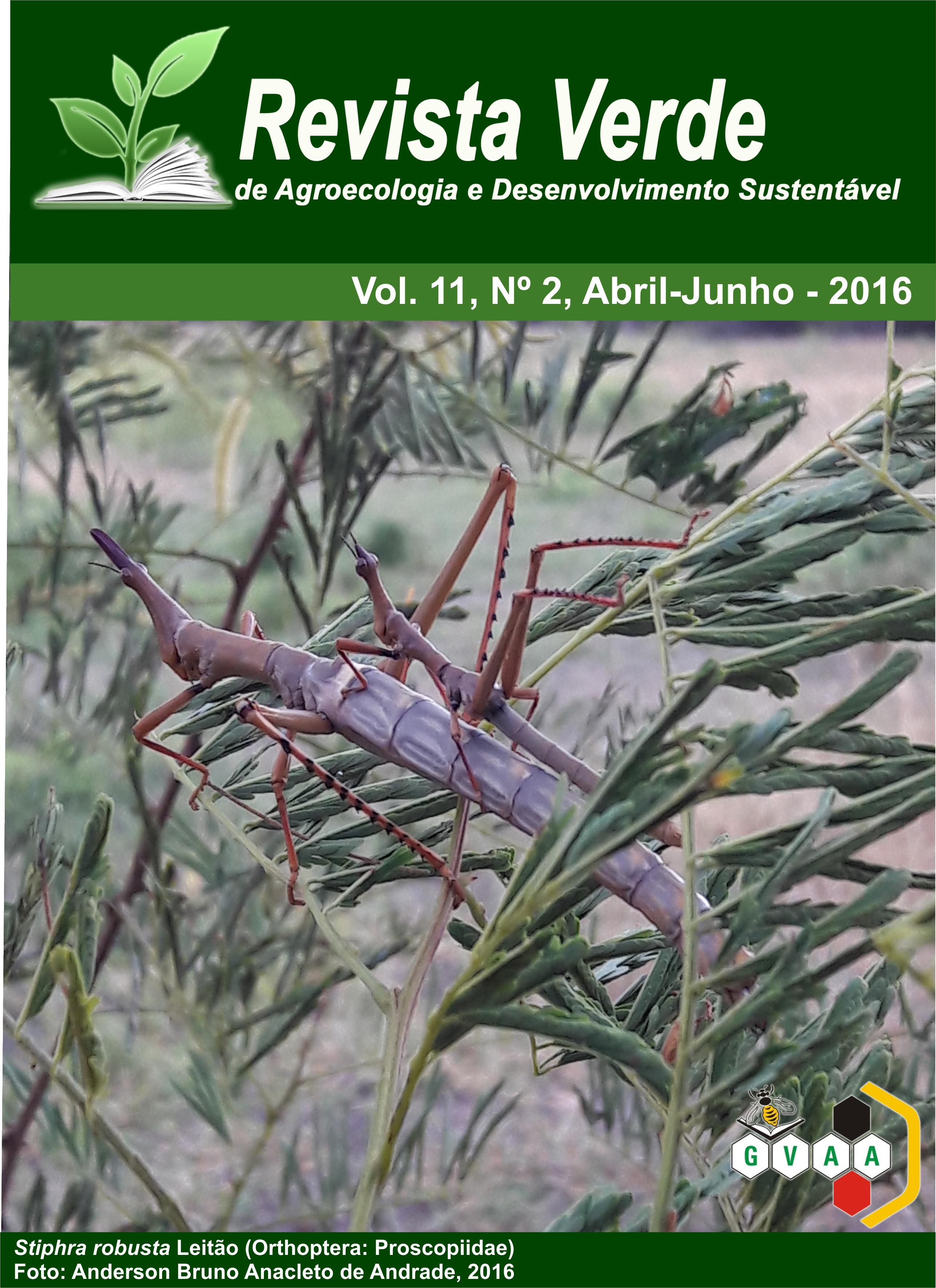Antibiose de acessos de feijão-fava infestados com gorgulhos (Zabrotes subfasciatus) em três gerações
DOI:
https://doi.org/10.18378/rvads.v11i2.3566Keywords:
Phaseolus lunatus, Grãos armazenados, Resistência de plantasAbstract
O feijão-fava, Phaseolus lunatus L., além de ser uma importante fonte proteica para populações do nordeste brasileiro, contribui também para aumento da renda familiar das mesmas. Um dos problemas da cadeia produtiva desta espécie é o ataque de insetos durante o período de armazenamento, causado principalmente pelo gorgulho Zabrotes subfasciatus. Através de teste de confinamento avaliou-se 23 acessos de feijão-fava infestados com Z. subfasciatus, durante três gerações do inseto, objetivando buscar fontes de resistência antibiótica. A pesquisa foi conduzida em laboratório sob condições ambientais controladas. Após confinar um casal deste inseto juntamente com dez grãos de cada acesso de feijão fava por sete dias, avaliou-se o peso seco dos insetos, número de ovos, viáveis e inviáveis, emergência de adultos e período médio de desenvolvimento. Observou-se que houve efeito da troca brusca de substrato alimentar/oviposição na postura das fêmeas, houve influencia dos acessos no peso, oviposição, mortalidade e período médio de desenvolvimento dos insetos, fatos que caracterizaram o acesso UFPI 468 altamente suscetível, o acesso UFPI 701 como o mais resistente e os acessos UFPI 121, UFPI 222, UFPI 281, UFPI 504, UFPI 579, UFPI 689 Rajada, UFPI 701 e UFPI 720 como moderadamente resistentes à Z. subfasciatus.
Antibiosis of lima beans access infested with weevil (Zabrotes subfasciatus) in three generations
Abstract: The lima beans, Phaseolus lunatus L., is an important protein source for the Brazilian northeastern people. It also contributes to the income rise of those families income. One of the problems in the productive chain of this specie is the pest attack during the storage time. This situation is mainly caused by Z. subfasciatus. Twenty three lima beans accesses infested by Z. subfasciatus were evaluated during three generations of weevil through confinement test. This procedure aimed to find resistance against this plague. The research was conducted at the Laboratory of Plant Protection (UFPI) under controlled environmental conditions. A couple of this insect was confined with 10 lima beans grains. After seven days, evaluated the dry weight of insects, number of eggs, viable and non-viable, adult emergence and mean development period. It was observed that there is an effect of the sudden change in feed/oviposition substrate posture of females, the weight, oviposition, mortality and mean development period of insects were influenced by access, facts that characterized the UFPI 468 access as highly susceptible, the UFPI 701 as more resistant and UFPI 121, 222 UFPI, UFPI 281, 504 UFPI, UFPI 579, 689 UFPI Gust, UFPI UFPI 701 and 720 as moderately resistant to Z. subfasciatus.













